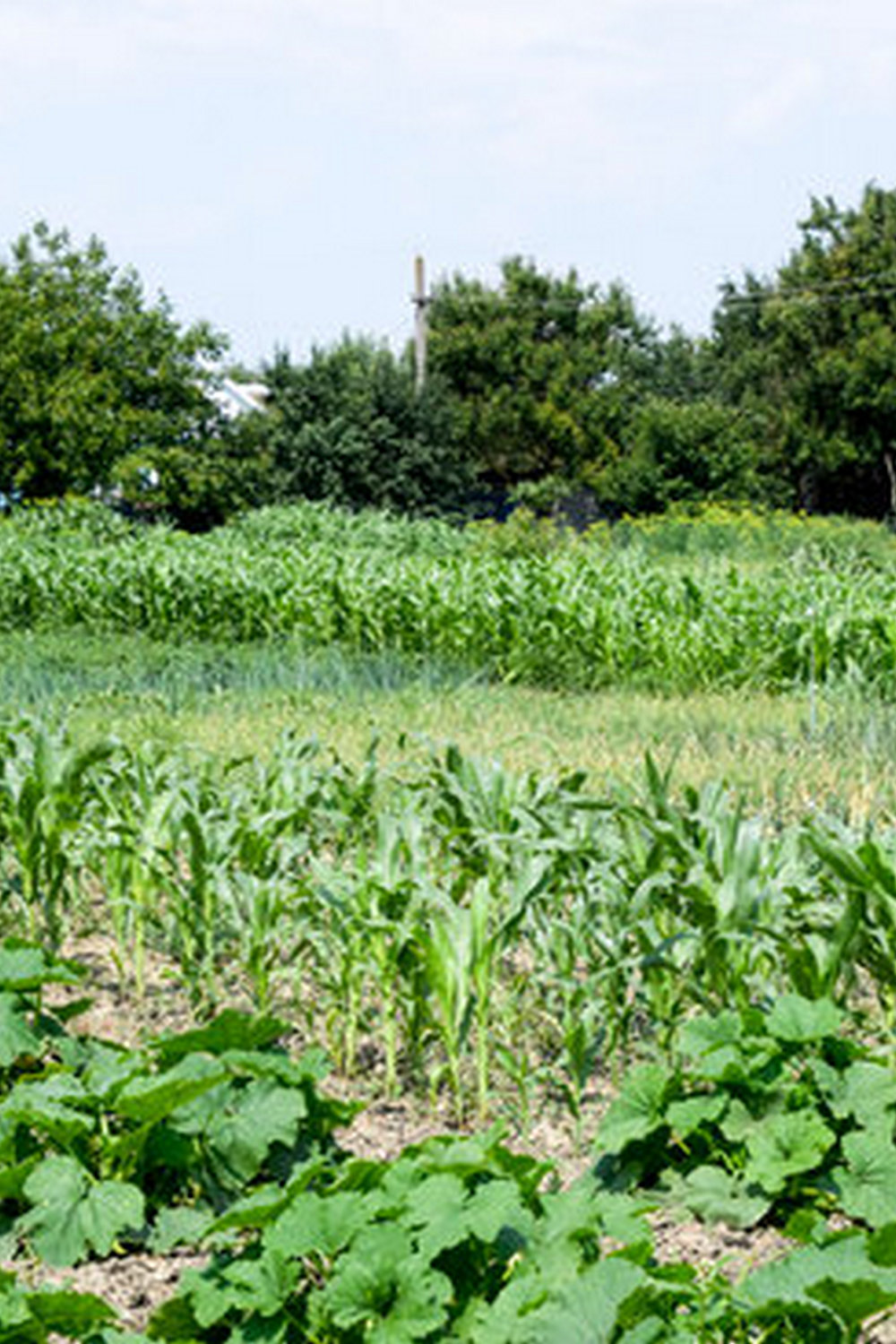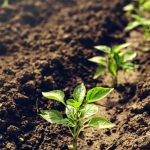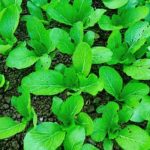Are you looking to have a flourishing vegetable garden this season? The key to success lies in having the best vegetable gardening soil. Good quality soil is essential for healthy plant growth and bountiful harvests. Whether you are a novice or seasoned gardener, understanding the importance of good soil for vegetable gardening is crucial for your gardening endeavors.
The best vegetable gardening soil should have ideal pH levels, proper drainage, and sufficient nutrient content to support the growth of your plants. Understanding these characteristics will help you choose the right type of soil for your vegetable garden. From topsoil to compost and potting mix, there are different types of soil that can be used for vegetable gardening, each with its own advantages and considerations.
Testing the quality of your soil is important to ensure that it meets the requirements for growing vegetables. DIY soil testing methods can help you determine the pH levels and nutrient content of your soil. Additionally, knowing how to improve your soil by adding amendments and fertilizers will further enhance its quality and promote healthier plant growth. Stay tuned as we delve deeper into these topics and more in this article on finding the best vegetable gardening soil.
The Characteristics of the Best Vegetable Gardening Soil
When it comes to vegetable gardening, the quality of the soil you use can make all the difference in the success of your garden. The best vegetable gardening soil possesses specific characteristics that are essential for healthy plant growth. These characteristics include pH levels, drainage, and nutrient content.
1. pH Levels: The pH level of your soil is crucial in determining its acidity or alkalinity. Most vegetables thrive in soil with a pH level between 6.0 and 7.0. It’s important to test your soil’s pH level and adjust it if necessary to ensure optimal growing conditions for your vegetables.
2. Drainage: Good drainage is essential for preventing waterlogging, which can lead to root rot and other issues. Sandy loam or loamy soils are ideal for vegetable gardening as they provide good drainage while retaining essential moisture for plant growth.
3. Nutrient Content: The best vegetable gardening soil is rich in essential nutrients such as nitrogen, phosphorus, and potassium. These nutrients are vital for healthy plant development and high-yield harvests. Adding organic matter like compost or well-rotted manure can help improve the nutrient content of your soil.
In summary, the best vegetable gardening soil has a balanced pH level, good drainage, and ample nutrient content to support healthy plant growth. By ensuring these characteristics are present in your gardening soil, you set yourself up for a bountiful harvest of delicious homegrown vegetables year after year.
Types of Soil for Vegetable Gardening
When it comes to vegetable gardening, the type of soil you use can greatly impact the success of your garden. Different types of soil have varying characteristics that can either help or hinder the growth of your vegetables. The three most common types of soil for vegetable gardening are topsoil, compost, and potting mix. Each type has its own unique qualities that make them suitable for different purposes in the garden.
Topsoil
Topsoil is the uppermost layer of soil, typically rich in organic matter and nutrients needed for plant growth. It is often used to improve existing garden beds or fill raised beds. When choosing topsoil for vegetable gardening, look for well-draining and nutrient-rich options to ensure healthy plant growth.
Compost
Compost is often referred to as “black gold” in the gardening world due to its richness in organic matter and nutrients. This type of soil is created through the decomposition of organic materials such as kitchen scraps, yard waste, and manure. Compost can be used as a top dressing for existing garden beds or incorporated into the soil to improve its overall quality.
Potting Mix
Potting mix is specially formulated for container gardening and is designed to provide optimal drainage and aeration for plants grown in pots or containers. It typically consists of a blend of peat moss, perlite, vermiculite, and other organic materials. When selecting a potting mix for vegetable gardening, look for options labeled specifically for vegetables to ensure they have the necessary nutrients.
In summary, understanding the characteristics and purposes of different types of soil for vegetable gardening is essential in creating a successful and bountiful garden. Whether you are using topsoil to fill raised beds, incorporating compost into existing garden beds, or using potting mix for container gardening, each type of soil plays a vital role in providing the necessary nutrients and support for your vegetables to thrive.
How to Test the Quality of Your Soil
Testing the quality of your soil is crucial in ensuring successful vegetable gardening. There are several DIY soil testing methods that you can use to determine the characteristics of your soil. Here are some effective DIY soil testing methods:
- Soil pH Testing: The pH level of your soil is an important factor in determining its suitability for growing vegetables. You can easily test the pH level of your soil using a pH testing kit available at most gardening stores.
- Soil Drainage Testing: Good drainage is essential for healthy vegetable plants. To test the drainage of your soil, simply dig a hole and fill it with water. If the water drains within a few hours, you have good drainage. If it takes longer, you may need to improve the drainage of your soil.
- Nutrient Content Testing: Testing the nutrient content of your soil is important for ensuring that your vegetables receive the necessary nutrients for healthy growth. You can conduct a simple nutrient content test using a DIY soil nutrient testing kit.
By utilizing these DIY soil testing methods, you can gain valuable insights into the quality of your vegetable gardening soil and make informed decisions about how to improve it.
It’s important to remember that while DIY soil testing methods can provide helpful information about your soil, for more accurate and detailed analysis, consider sending a sample of your soil to a professional laboratory for testing. This will give you comprehensive data on the composition and characteristics of your best vegetable gardening soil, allowing you to make precise adjustments and amendments for optimal plant growth.
How to Improve Your Soil
Adding the right amendments and fertilizers to your vegetable gardening soil is crucial in ensuring a bountiful harvest. The best vegetable gardening soil is rich in nutrients, well-draining, and has the right pH levels for optimal plant growth. However, even the best soil can benefit from the addition of organic matter and other supplements to improve its overall quality.
One of the most common and effective ways to improve your soil is by adding compost. Compost is a nutrient-rich organic material that helps improve soil structure, drainage, and moisture retention. It also encourages beneficial microbial activity in the soil, which is essential for breaking down organic matter and releasing nutrients that are accessible to plants.
In addition to compost, you may also need to add specific amendments based on the results of a soil test. Common amendments include lime to raise pH levels, sulfur to lower pH levels, and gypsum to improve soil structure. Fertilizers are also important for providing essential nutrients like nitrogen, phosphorus, and potassium that may be lacking in your soil. It’s important to choose fertilizers that are specifically formulated for vegetables and follow application instructions carefully.
| Benefit | Example |
|---|---|
| Improves Soil Structure | Compost |
| Adjusts pH Levels | Lime (raises pH), Sulfur (lowers pH) |
| Provides Essential Nutrients | Nitrogen, Phosphorus, Potassium |
Best Practices for Soil Maintenance
Maintaining the best vegetable gardening soil is crucial for the health and productivity of your vegetable garden. Three key practices for soil maintenance are mulching, watering, and aeration.
Mulching helps retain moisture, prevents weed growth, and adds organic matter to the soil as it breaks down. Organic mulches such as straw, grass clippings, or wood chips are excellent choices for vegetable gardens. These materials not only improve soil structure but also provide additional nutrients as they decompose.
Proper watering is essential for vegetable gardening soil. Different vegetables have varying water needs, so it’s important to water deeply and less frequently rather than shallowly and frequently to encourage deep root growth. Using a soaker hose or drip irrigation system can help deliver water directly to the roots without wasting it through evaporation.
Aeration is another essential practice for maintaining the best vegetable gardening soil. Compacted soil can restrict root growth and reduce oxygen levels in the soil. Aerating your garden with a pitchfork or aerator tool will help loosen compacted soil and improve air circulation.
| Soil Maintenance Practice | Benefits |
|---|---|
| Mulching | Retains moisture, prevents weed growth, adds organic matter |
| Watering | Delivers water directly to roots without waste, encourages deep root growth |
| Aeration | Loosens compacted soil, improves air circulation |
By incorporating these best practices into your vegetable garden maintenance routine, you can ensure that your soil remains healthy and supportive of robust plant growth throughout the growing season.
Common Mistakes to Avoid When Choosing and Using Vegetable Gardening Soil
When it comes to choosing the best vegetable gardening soil, there are several common mistakes that many gardeners make. By avoiding these mistakes, you can ensure that your vegetable garden has the optimal growing conditions to produce a bountiful harvest.
Ignoring pH Levels
One of the most common mistakes when choosing vegetable gardening soil is ignoring pH levels. Different vegetables thrive in different pH levels, so it’s important to test your soil and make adjustments as needed. For example, most vegetables prefer a slightly acidic soil with a pH level between 6 and 7. If the pH level is too high or too low, it can affect the plant’s ability to absorb nutrients from the soil.
Overlooking Drainage
Another mistake is overlooking the importance of proper drainage in vegetable gardening soil. Soil that doesn’t drain well can lead to waterlogged roots, which can cause root rot and other issues for your plants. It’s important to choose a soil mix that provides good drainage to prevent water from pooling around the roots of your vegetables.
Using Poor Quality Soil
Many gardeners make the mistake of using poor quality soil or not taking the time to properly amend their soil before planting. The best vegetable gardening soil should be rich in organic matter and nutrients to provide a healthy environment for plant growth. It’s important to invest in high-quality topsoil, compost, or potting mix that will provide your vegetables with the necessary nutrients for optimal growth.
By avoiding these common mistakes when choosing and using vegetable gardening soil, you can set your garden up for success and enjoy a thriving harvest of fresh vegetables. Taking the time to understand the characteristics of good soil and making thoughtful choices can make all the difference in the health and abundance of your garden.
Conclusion
In conclusion, choosing the right soil is essential for a bountiful vegetable garden. As discussed in this article, the best vegetable gardening soil should have optimal pH levels, good drainage, and rich nutrient content to support healthy plant growth. It is important to understand the characteristics of different types of soil, such as topsoil, compost, and potting mix, and how they can be used to improve the quality of your garden soil.
Testing the quality of your soil is crucial in determining its deficiencies and what amendments or fertilizers are needed for improvement. DIY soil testing methods can help you understand the specific needs of your garden soil and guide you in making informed decisions about how to enhance its quality. Additionally, regular maintenance practices like mulching, proper watering, and aeration are key to keeping the soil healthy and conducive to plant growth.
Avoiding common mistakes when choosing and using vegetable gardening soil is also important. By being aware of these pitfalls and following best practices for soil maintenance, you can optimize the growing conditions for your vegetables and maximize their yields.
Ultimately, with the right knowledge and care, you can create an ideal environment for your vegetable garden to thrive and produce an abundant harvest. Remember that investing time and effort into selecting the best vegetable gardening soil will pay off in terms of a successful and rewarding gardening experience.
Frequently Asked Questions
What Is the Best Soil to Buy for Vegetable Garden?
The best soil to buy for a vegetable garden is a loamy soil that is well-draining and rich in organic matter. Look for soil labeled as “vegetable garden soil” or “potting mix” that contains ingredients like compost, peat moss, and perlite.
What Is the Best Soil for Growing Vegetables in Planters?
The best soil for growing vegetables in planters is a lightweight potting mix specifically designed for container gardening. Look for a mix that contains a blend of peat moss, vermiculite, and perlite to ensure good drainage and moisture retention.
What Is the Best Soil Amendment for Vegetable Garden?
The best soil amendment for a vegetable garden is compost. Adding compost to the soil improves its structure, fertility, and ability to hold moisture – all of which are essential for healthy vegetable plants. Other good amendments include aged manure, leaf mold, and perlite.

If you’re looking to get into vegetable gardening, or are just looking for some tips on how to make your current garden better, then you’ve come to the right place! My name is Ethel and I have been gardening for years. In this blog, I’m going to share with you some of my best tips on how to create a successful vegetable garden.





